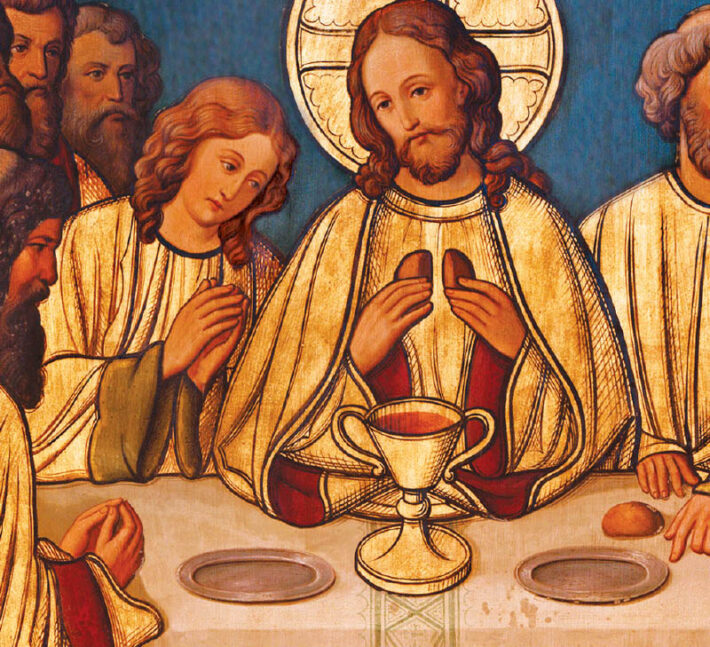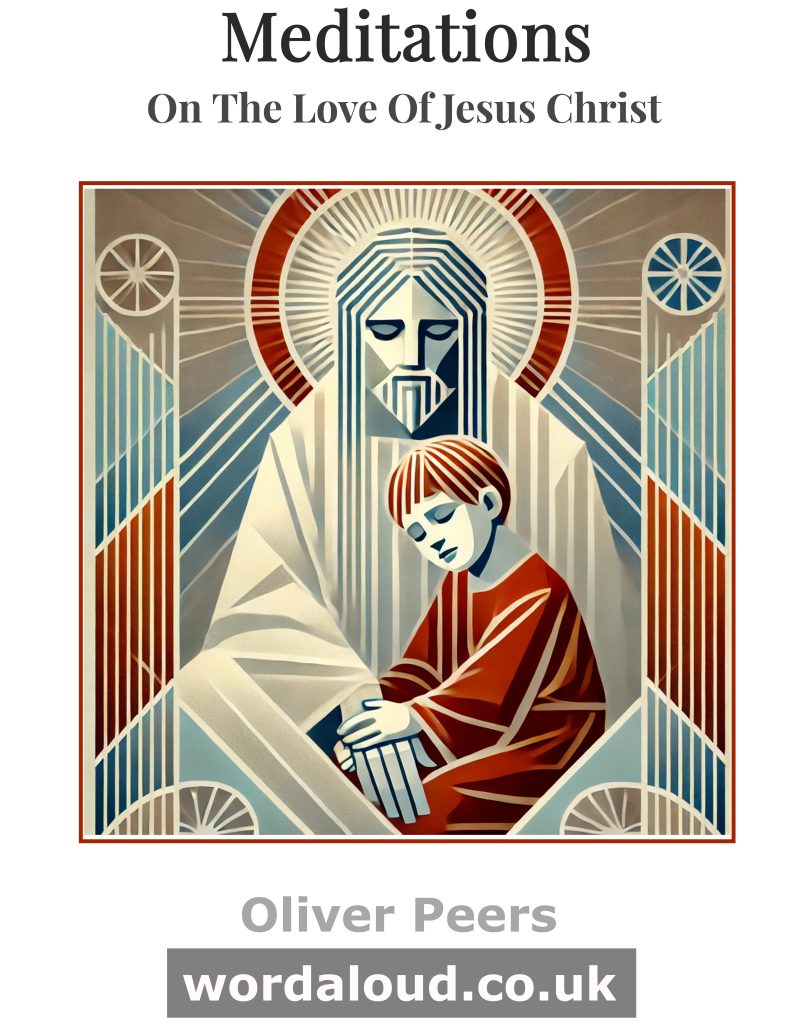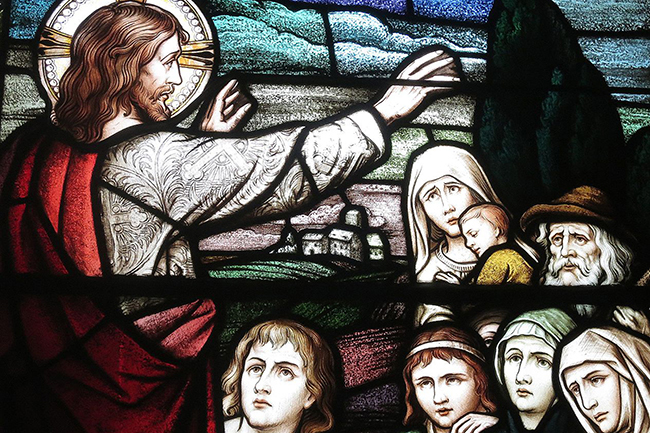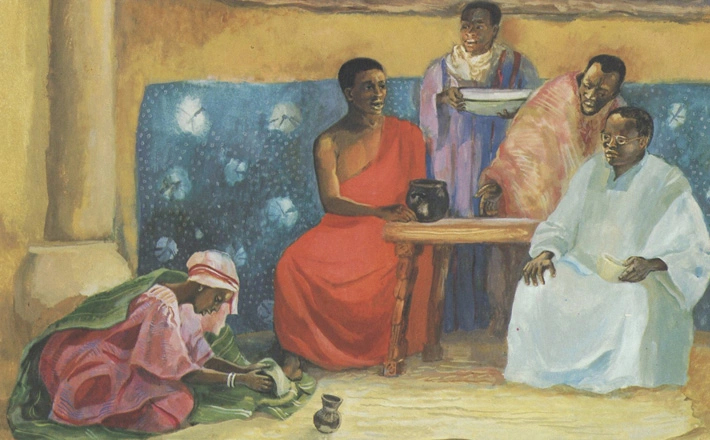In the Bible, a miracle is an event that is not explicable by natural or scientific laws and is therefore attributed to a divine agency. Miracles are often seen as a sign of the intervention of God in the affairs of human beings.
In the Old Testament, the most famous miracles are the Ten Plagues of Egypt, in which God punished the Pharaoh for refusing to release the Israelites from slavery, and the parting of the Red Sea, in which God allowed the Israelites to escape from the pursuing Egyptians by opening a path through the sea.
In the New Testament, the miracles of Jesus are a central part of his ministry and are seen as evidence of his divinity. These include healings, such as the restoration of sight to the blind and the raising of the dead, and acts of nature, such as turning water into wine and walking on water.
Is There A Theological Significance To Jesus’ Miracles?
In the Christian tradition, the miracles performed by Jesus are seen as a manifestation of his divinity and as proof of his authority to teach and heal. Many of these miracles are described in the Gospels of the New Testament, which are the primary source of information about the life and teachings of Jesus. The purpose of the miracles, according to the Gospels, was to demonstrate Jesus’ power over natural forces and to show that he had the authority to forgive sins and offer salvation to those who believed in him.
Why Did Jesus Ask To Keep His Miracles Secret? ‘Tell No One Of This.’
In the Gospels, there are a few instances where Jesus tells people not to tell others about what he has done for them. For example, in the Gospel of Matthew, after Jesus healed a man who was possessed by demons, he told the man, ‘See that you tell no one anything, but go, show yourself to the priest and offer the gift that Moses commanded, as a proof to them’ (Matthew 8:4). In this case, it seems that Jesus was concerned that the man’s testimony might not be believed or might be misunderstood, and so he asked him to keep the experience to himself for the time being.
It is difficult to say for sure why Jesus might have asked someone to keep quiet about a miracle without knowing the specific context in which the request was made. However, some possible reasons that come to mind include:
- To avoid drawing unnecessary attention to himself. In the Gospels, Jesus often tries to avoid drawing too much attention to himself, especially from the authorities who are hostile to him. Asking someone to keep quiet about a miracle might be one way of avoiding unwanted attention and allowing Jesus to continue his ministry without interference.
- To allow the person who was healed to experience the transformation for themselves. In some cases, the person who was healed might have been skeptical or unsure of what had happened to them. Asking them to keep quiet about the miracle might have given them time to reflect on the experience and come to their own understanding of it without being influenced by others.
- To test the person’s faith. In some cases, Jesus might have asked someone to keep quiet about a miracle as a test of their faith. If they were truly grateful for what Jesus had done for them, they would be willing to follow his instructions and trust that he had a good reason for asking them to keep quiet.
- These are just a few possible reasons why Jesus might have asked someone to keep quiet about a miracle. It is important to remember that the Gospels are ancient texts and that we must be careful not to impose our own interpretations on them without considering the historical and cultural context in which they were written.
- To avoid creating conflict or division. In the Gospels, Jesus often encounters people who are skeptical or hostile to his teachings, and he sometimes tries to avoid confrontations with them. Asking someone to keep quiet about a miracle might be one way of avoiding a confrontation or a heated debate that could disrupt his ministry.
- To avoid being misunderstood or misrepresented. In some cases, the person who was healed might not have understood the full significance of what Jesus had done for them, and they might have tried to explain it in a way that distorted or misrepresented the truth. Asking them to keep quiet might have given Jesus time to explain things to them more fully and help them to understand the true meaning of the miracle.
- To avoid becoming a spectacle. In the Gospels, there are many instances where people are amazed by the miracles that Jesus performs, and they often try to make him into a kind of celebrity or showman. Asking someone to keep quiet about a miracle might have been one way of avoiding this kind of attention and keeping the focus on the message that Jesus was trying to convey.
What Is The Significance Of Miracle Of The Wedding At Cana?
In the Christian tradition, the wedding at Cana is significant because it is the first of the miracles performed by Jesus that is recorded in the Gospels of the New Testament. This event is described in the Gospel of John, where it is said that Jesus, along with his mother Mary and his disciples, attended a wedding in the town of Cana. At the wedding, the host ran out of wine, and Mary asked Jesus to help. In response, Jesus turned water into wine, which is seen as a miraculous act that demonstrated his power and authority.
In the Gospel of John, after Mary asks Jesus to help with the wine at the wedding in Cana, he replies, “Woman, what does this have to do with me? My hour has not yet come” (John 2:4). This statement is often seen as indicating that Jesus was aware that he had a special mission to fulfill and that he was not yet ready to fully reveal his identity and his purpose. The “hour” that Jesus refers to is often interpreted as the time when he would be crucified and resurrected, which is the central event of Christian salvation history. By saying that his hour had not yet come, Jesus might have been indicating that he was not yet ready to fully reveal himself and his mission to the world.
What Are The Healing Miracles And Their Deeper Significance?
There are many examples of healing miracles in the Gospels of the New Testament. Some of the most well-known examples include the healing of the sick man at Bethesda (John 5:1-15), the healing of the woman who had been bleeding for twelve years (Matthew 9:20-22), and the healing of the man born blind (John 9:1-7).
The deeper significance of these healing miracles is that they demonstrate the power and authority of Jesus to heal and to overcome natural forces. In the Gospels, the healing miracles are often seen as signs of the coming kingdom of God, and they are often accompanied by other miraculous events, such as the casting out of demons or the calming of storms. The healing miracles are also significant because they show the compassion and love of Jesus for those who are suffering, and they are often followed by encounters with the healed individuals in which Jesus teaches them about the nature of faith and salvation.
Should We Believe In The Casting Out Of Devils?
The question of whether or not we should believe in the casting out of devils is a matter of personal belief and faith. In the Christian tradition, the casting out of demons is seen as a miraculous act that is performed by Jesus and his disciples as a sign of their authority and power. This belief is based on the accounts of demon possession and exorcism that are found in the Gospels of the New Testament.
In the Catholic Church, there is a firm belief in the reality of Satan and his devils, and in the power of exorcism. This belief and this power are not to be taken lightly. Do not deny the reality of Satan.
It has been said that belief in the casting out of demons can be a matter of personal faith and interpretation of the Bible. People may believe in the reality of demonic possession and view the casting out of demons as a miraculous act that is performed by those with the authority to do so, while others view accounts of demonic possession and exorcism in the Gospels as metaphorical or symbolic stories intended to convey a deeper truth about the nature of faith and salvation.
Miracle Of The Feeding Of The Multitude
The miracle of the feeding of the multitude is one of the most well-known and widely celebrated miracles in the Gospels of the New Testament. This event is described in all four of the Gospels, although the details vary slightly in each account. In general, the story goes that Jesus was teaching a large crowd of people when it became clear that they were hungry and had nothing to eat. In response, Jesus took a small amount of bread and fish, blessed it, and distributed it among the crowd, and miraculously, the food was enough to feed everyone and there were even leftovers.
The significance of this miracle lies in the fact that it demonstrates the power of Jesus to provide for the needs of others and to overcome natural limitations. In the Gospels, the feeding of the multitude is often seen as a sign of the coming kingdom of God, in which all people will be provided for and no one will go hungry. The miracle is also significant because it shows the compassion and generosity of Jesus, who was willing to share what he had with others and to provide for their needs.
The miracle of the feeding of the multitude has been interpreted in many different ways throughout history. Some of the most common interpretations include:
A literal, historical event. Some people believe that the feeding of the multitude actually happened as described in the Gospels and that it was a miraculous act performed by Jesus. In this view, the miracle demonstrates the power of Jesus to provide for the needs of others and to overcome natural limitations.
A symbolic or metaphorical story. Others believe that the story of the feeding of the multitude is not meant to be taken literally, but rather as a symbolic or metaphorical tale that is intended to convey a deeper truth about the nature of faith and salvation. In this view, the miracle represents the abundance and generosity of God, who is willing to provide for the needs of all people and to share his blessings with them.
A moral lesson. Some people interpret the story of the feeding of the multitude as a moral lesson about the importance of sharing and helping others. In this view, the miracle is not meant to be taken literally, but rather as a reminder that we should always be ready to help those in need and to share what we have with others.
Symbolically, the miracle can be seen as representing the abundance and generosity of God. In this interpretation, the small amount of bread and fish that Jesus uses to feed the multitude represents the limited resources that we often have at our disposal, while the fact that the food is enough to feed everyone and there are even leftovers represents the way in which God can take our limited resources and multiply them in order to meet the needs of others.
Symbolically, the miracle can also be seen as representing the power of Jesus to overcome natural limitations and to provide for the needs of others. In this interpretation, the fact that Jesus is able to feed a large crowd with a small amount of food represents his power to overcome the limitations of the physical world and to provide for the spiritual and emotional needs of those who believe in him.
Morally, the miracle can be seen as a lesson about the importance of sharing and helping others. In this interpretation, the story of the feeding of the multitude reminds us that we should always be ready to help those in need and to share what we have with others. It teaches us that even when we have limited resources, we can still make a difference in the lives of others by being generous and compassionate.
Writers And Thinkers Through History Concerning The Miracle Of The Feeding Of The Multitude:
Augustine of Hippo, who wrote extensively about the meaning and significance of the miracle in his book The City of God. Augustine interpreted the miracle as a symbol of the abundance and generosity of God, and he used it as evidence of Jesus’ divinity and authority.
Augustine of Hippo wrote, “The bread which the Lord multiplied to feed the five thousand was the Word of God, the Word by whom all things were made.”
Thomas Aquinas, who wrote about the miracle in his Summa Theologica. Aquinas interpreted the miracle as a sign of the coming kingdom of God and as evidence of Jesus’ power over natural forces.
Thomas Aquinas wrote, “By this miracle, Christ showed that He had power over nature, for He multiplied the loaves and fishes beyond the natural course of things.”
Martin Luther, who wrote about the miracle in his commentary on the Gospel of John. Luther saw the miracle as a sign of Jesus’ compassion and love for those who are suffering, and he used it as evidence of Jesus’ authority to forgive sins and offer salvation.
Martin Luther wrote, “In this miracle Christ is seen to be truly human and truly divine; He has compassion on human misery, and He is able to do something about it.”
John Calvin, who wrote about the miracle in his Institutes of the Christian Religion. Calvin saw the miracle as a sign of the abundance and generosity of God, and he used it as evidence of Jesus’ power and authority.
John Calvin wrote, “The Lord, by performing this miracle, intended to confirm our faith that, whenever He is present, we must not fear for the future.”
Is The Eucharist The Ultimate Miracle?
In the Christian tradition, the Eucharist is seen as the ultimate miracle because it is the means by which the body and blood of Jesus are made present to believers. The Eucharist is a sacrament in which bread and wine are consecrated and transformed into the body and blood of Christ. This transformation is known as transubstantiation, and it is seen as a miraculous act that allows believers to participate in the sacrifice of Christ and to receive his grace and salvation.
The significance of the Eucharist as the ultimate miracle lies in the fact that it is the means by which believers are able to participate in the life, death, and resurrection of Jesus. By participating in the Eucharist, believers are able to share in the same sacrifice that Jesus made for the salvation of the world, and they are able to receive the same grace and mercy that he offers. The Eucharist is also significant because it is a visible sign of the presence of Christ in the world and in the lives of believers. It is a reminder that Christ is always with us and that he is the source of our salvation.
Prayer
As Christians, we can pray for miracles to happen in our lives by asking God to work in our lives in ways that are beyond our understanding or control. We can pray for specific things, such as healing from an illness or resolution of a difficult situation, and trust that God is able to do more than we could ever ask or imagine.








